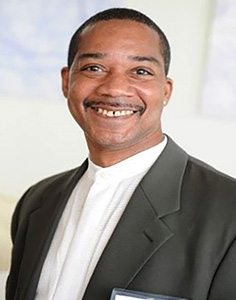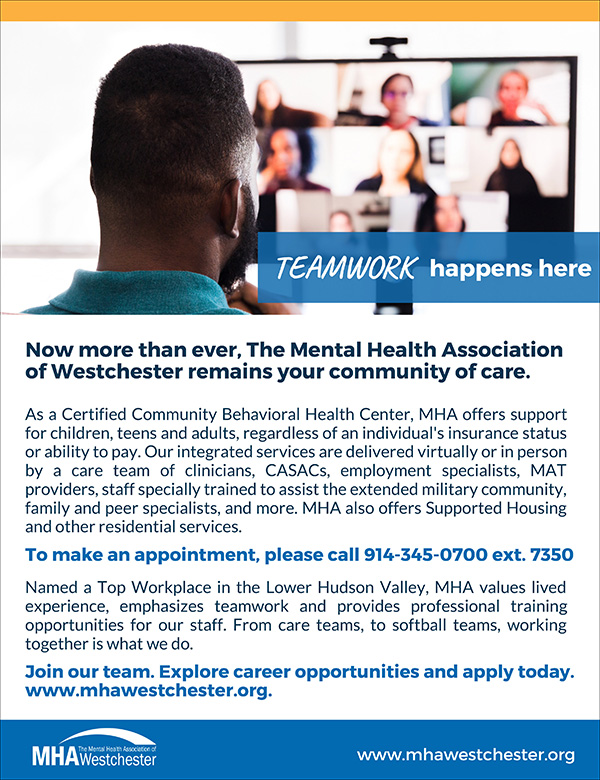As a peer professional and advocate who helps people recognize their inherent strengths and works to facilitate recovery, it is so very disappointing to consider that after the huge volume of research that has been conducted, and the enormous number of scholarly articles which have been written, the behavioral health care industry still operates largely from a disease-focused perspective.

Dwayne J. Mayes
It took less than three months for this COVID-19 pandemic to expose some of the most fragile fault lines across the country. These fault lines point out the differences in healthcare and essential supports because of one’s race and poverty status, leading toward a larger discussion of social determinants and their impact on health. Dr. Paul Farmer, one of the world’s leading experts on infectious diseases, recently mentioned that “all the social pathologies of our nation come to the fore during epidemics.” In order to continue delivering services, our systems and individual agencies had to make rapid adjustments in the way we deliver services in a diverse environment; which signals ways we are going to operate in the future.
MHA’s Peer Services made rapid adjustments to the way we deliver services to the most vulnerable. Typically, we would have had more face-to face interactions to address the social isolation which is inherent with serious emotional distress. However, we discovered that we can engage individuals more frequently and, many times, on a more regular basis through use of either video or telehealth systems than we were before. Going forward we plan to implement a hybrid model of engagement, which provides more choice for individuals to consider how they may be most comfortable. Some are more comfortable at home. With others, if there are not any logistical or physical needs that may pose a challenge, they may be able to engage virtually better than in person. Virtual engagement does present some challenges: we used to talk about the digital divide—limited access to both physical technology and the financial requirements of having unlimited data plans. We have had to figure out how to use available resources and to make sure everyone can have access to this virtual and remote environment.
When talking about social determinants of health, the CDC mentioned that within the African American community, there is a greater likelihood to die from COVID-19 due to the larger prevalence of multiple chronic medical conditions compared to the general population. There are communities across the country with high chronic disease burden such as diabetes, high blood pressure, asthma, and obesity. Many of these health outcomes show the disparities by race and the greater vulnerabilities to complications related to COVID-19. Individuals who live in mostly urban areas in congested high-rise apartment buildings, for example, may not have the opportunity to practice social distancing as recommended by the CDC. There are a lot of policies that need to be looked at right now to determine how to prevent this sort of pandemic repeating itself in the future. In addition to the physical health challenges, one of the other things we have had to acknowledge is the economic impact that this pandemic has had with increased housing insecurity and food insecurity. Many essential workers, who may be hourly workers, are being challenged to go back into what could arguably be a high-risk environment. It all plays a role in exposure and being able to be more protected against infection.
When we are working with a highly vulnerable population, it is important to be able to address the most practical needs that individuals have. We work with individuals who, in many cases, are coming out of long-term institutional settings, such as state hospital or criminal justice settings. We make sure that we can link them to community supports and services available for food, housing, transportation, communication, and some financial supports. What we have found is many of these individuals do not have the skills necessary to maintain themselves long term. From a peer perspective, we encourage as much independence and self-sufficiency as possible. We help individuals tap into what social supports might be available in the community and assist them as they develop more natural supports from family or personal networks. We also help them understand that their health is their primary responsibility. It is a challenge when we are working with individuals who are historically conditioned to become and remain dependent on services. As peers, we challenge that dependence and demonstrate that there are things you can and should be doing for yourself…and this is how you can do it. We use our own lived expertise to show by example in a very practical “where the rubber meets the road” way to help individuals realize they can take advantage of certain things. We use ourselves as mentors, examples of how to overcome adversity, but it is going to be an ongoing challenge…it is our reality now.
One of the core values of peer support is the idea of mutuality, and one of the ironic experiences of this COVID-19 response is that our lowest paid workers are being recognized as essential to maintaining social order and providing support to everyone. It eliminated the stigma of having a mental health diagnosis when it comes to fear of infection or being afraid of being exposed to a deadly pathogen. It evens the playing field. From a peer perspective, we have found we had to expand the services we are providing so we are not just focusing on individuals who have an official Axis 1 diagnosis of a mental health challenge, but we are working with anyone who may be experiencing emotional distress because of COVID-19. The population we serve has grown exponentially. Our warm lines are open to anyone experiencing any type of emotional challenge or crisis during this time. We have found that even with recommendations of social distancing or staying at home, sometimes home is not the safest place for some of the individuals we work with. We try to come up with creative ways to engage individuals outside the home, while still maintaining safe practices.
I am not sure if individuals are necessarily correlating their emotional distress with the current stressors – emotional distress does not discriminate. It affects our team as well. We talk about self-care and maintaining emotional and physical wellness on a day-to-day basis, as we are trying to support others. I do believe it is evening the playing field in many ways, as the public understands that what was traditionally considered an illness is more accurately understood as a response to stressors and people just have different coping mechanisms.
We are already experiencing an increase in some PTSD, particularly with the frontline healthcare workers. It is traumatic being separated from family and not being able to engage in the typical ways, for example, not being able to hug and kiss your kids before you decontaminate yourself if possible. So, as a lasting impact, we may expect to see an increased distress response and also engagement in self-care and attention to personal wellness post COVID-19.
I think this is an opportunity as a society for us to consider what I would like to consider a pair of ACES. We are most familiar with the acronym ACE to define Adverse Childhood Experiences. We have found there are Adverse Community Experiences and Adverse Community Environments, which require a collective effort to make sure we leverage our networks and harness our collective power to ensure health, well-being, and equitable access to needed support for our families and children.
Dwayne J. Mayes is Director of the Recovery Network and Peer Training at Mental Health Association of Westchester.







